Navy Provides Realistic, Operationally-relevant Test Environment for Technology
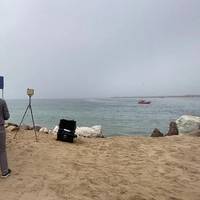
“Synergy” is an overused word. But in the case of the “Advanced Naval Technology Exercises” that are held around the country, ANTX is truly a sum greater than its parts.ANTXs are conducted by the Naval Research & Development Establishment (NR&DE) and hosted at the various Naval Warfare Centers to demonstrate emerging technologies and innovations aimed at solving Navy and Marine Corps problems and addressing mission priorities and gaps. They are not so much exercises, which usually denotes training, but more like technology demonstrations.
IAMPE's Newest Class Of Maritime Port Executives
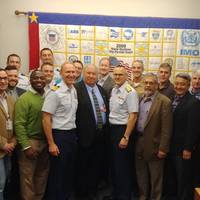
The International Association of Maritime and Port Executives (IAMPE) has announced the latest group of Maritime Port Executives who completed the accredited seminar the week of March 11th at DHS/USCG Headquarters in Washington, DC.The latest class of graduates include LCDR. William Albright, USCG-MPE; Mr. Zach Bonheim-MPE; Cdr. Charles Bright, USCG-MPE; CDR. Bradely Clare, USCG-MPE; LCDR. Dan Davis, USCG-MPE; LCDR. Leslie Downing, USCG-MPE; LCDR. Jamie Gatz, USCG-MPE; CDR. Jason Gunning, USCG-MPE; Mr. Rajiv Khandpur-MPE; LT. David Liberman, USCG-MPE; LCDR. Ben Mazyck, USCG-MPE; LCDR.
The New York Bight – a Hydra of Difficult Issues
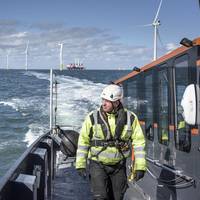
The greening of America’s energy signature will not come without the usual discussions, regulatory oversight – and opposition from a raft of special interests.Amidst an atmosphere of possible resurgence in the domestic offshore oil energy, maritime stakeholders are also reminded that there is more than one kind of energy available for development off the four collective coasts of the United States. That process is underway in the Great Lakes; it has already happened off of New England.
USCG Navigation Center: Steering a steady course for safe, secure, efficient waterways
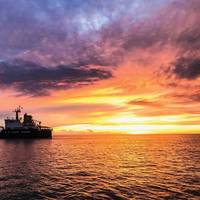
The U.S. Coast Guard’s Navigation Center (NAVCEN) is involved in a number of activities that have an impact on all Americans, even if they don’t realize it.From motorists checking directions with their Global Positioning System (GPS) to boaters to ships coming and going to U.S. ports, the NAVCEN plays an unseen but vital role.With a staff of19 officers, 17 enlisted personnel and 19 civilians, NAVCEN falls under the Director of Marine Transportation Systems (CG-5PW) at USCG Headquarters…
Op/Ed: USCG Forges the Future of Navigation

Maintaining the system of buoys and beacons that guide mariners through our nation’s waterways is the United States Coast Guard’s oldest mission. Tracing its roots to the ninth law passed by Congress in 1790 that moved lighthouses under Federal control, the U.S. Lighthouse Service and its vast portfolio of buoys, beacons, buoy tenders and lightships were a founding part of the U.S. Coast Guard in 1939. Along with the mission, many of the beacons the Coast Guard maintains today date back centuries.
Interview: Rear Admiral Paul Thomas, USCG
Rear Admiral Paul Thomas develops and maintains policy, standards and program alignment for waterways management, navigation safety, boating, commercial vessels, ports and facilities, merchant mariner credentialing, vessel documentation, marine casualty investigation, inspection and port state control activities. He serves as the Assistant Commandant for Prevention Policy overseeing three Coast Guard directorates: Inspections and Compliance, Marine Transportation Systems, and Commercial Regulations and Standards. A specialist in Marine Safety, Security and Environmental Protection, he has served at the Marine Safety Center in Washington, DC and many others before that. His other tours include, among others, service as Commanding Officer of USCGC CAPE ROMAIN.
Insights: Rear Admiral Paul F. Thomas
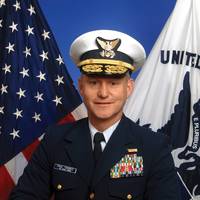
Rear Admiral Paul Thomas is the Assistant Commandant for Prevention Policy overseeing three Coast Guard directorates: Inspections and Compliance, Marine Transportation Systems, and Commercial Regulations and Standards. The programs include waterways management, navigation and boating safety, ports and facilities, merchant mariner credentialing, vessel documentation, marine casualty investigation, commercial vessel inspections, and port state control. A longtime specialist in Marine Safety…
Capstone Expands LNG/Diesel Microturbines in Marine Market
Capstone Turbine Corporation, a clean technology manufacturer of microturbine energy systems, is expanding its product offering in the marine market and has appointed six Capstone marine distributors. Capstone marine microturbines, which run on cleaner and less costly liquid natural gas (LNG) or traditional diesel, already are installed on several vessels including the Argonon. The Argonon is a Type C Tanker in the European inland waterways that has been successfully operating with two C30 LNG Capstone microturbines since 2011. "The Argonon has been efficiently running using Capstone microturbines in excess of 20,000 combined hours," said Gerard Deen, Founder of Deen Shipping.
Capstone Turbine Expands Marine Product Line

Capstone Turbine Corporation, a clean technology manufacturer of microturbine energy systems, is expanding its product offering in the marine market and has appointed six Capstone marine distributors. In addition, the company has launched a contest that will give away up to 130 kilowatts of marine power to three existing or new ship owners. Winners will be selected from entries submitted which represent the most compelling marine projects that can be powered by clean-and-green marine microturbines. Entries must be submitted at www.winmicroturbinepower.net by March 31, 2014.
U.S. Coast Guard Academy to Host Academic Workshop

The Center for Maritime Policy and Strategy will host an academic workshop, Friday, Sept. 20, 2013, at the U.S. This one-day workshop will bring together a diverse group of scholars, practitioners and stakeholders from across the country to discuss how to achieve resilient ports and marine transportation systems in an era of extreme storms, rising seas and the melting Arctic ice sheet. The workshop features two panels that highlight research currently being conducted by postdoctoral fellows at the center.
Insights: Rear Admiral Joseph A. Servidio
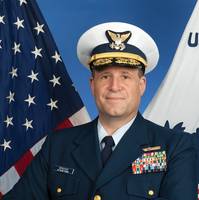
Rear Admiral Joseph A. Servidio is Assistant Commandant for Prevention Policy overseeing Inspections and Compliance, Marine Transportation Systems, and Commercial Regulations and Standards. Theses directorates include waterways management, navigation and boating safety, commercial vessels, ports and facilities, merchant mariner credentialing, vessel documentation, marine casualty investigation, inspections, and port state control. His previous assignments include numerous postings in marine inspection, marine safety and investigation billets. Servidio is a graduate of the U.
USCG Publishes Outer Continental Shelf Notice of Arrival Rule
WASHINGTON — The U.S. Coast Guard announced Thursday publication in the Federal Register of an outer continental shelf notice of arrival rule designed to enhance maritime domain awareness over outer continental shelf activities. This final rule enhances maritime security and safety by requiring U.S. and foreign vessels, floating facilities and mobile offshore drilling units arriving on and engaging in outer continental shelf activities to report their arrival time and location and information regarding the vessels' voyage, cargo, crew and vessel information. The outer continental shelf includes all submerged lands seaward and outside of the area of lands beneath navigable waters and of which the subsoil and seabed are subject to the jurisdiction and control of the U.S.
Sname Technical Program: 2004 SNAME Technical Program
(All information is current as of July 30, 2004. A1(D16) - Shipboard Routing Assistance – Decision Making Support for the Operation of Container Ships in Heavy Seas by Hans G. B1(D40) - Development and Investigation of the Ballast-Free Ship Concept, by Miltiadis Kotinis, Michael G. A2(D26) - Criteria for Parametric Roll of Large Containerships in Longitudinal Seas by Y.S. Shin, V.L. Belenky, J.R. Paulling, K.M. Weems, W.M. B2(D39) - Computational Fluid Dynamics Study of the Effectiveness of Flow-Through Ballast Exchange by Christopher P. Kent, Michael G. B3(D13) - Compressed Natural Gas Carrier Development – The Knutsen PNG Concept by Sverre Valsgård, Kim J. A5(D42) - U.S. Coast Guard Cutter Maneuverability by R. Sheinberg, P. Minnick, J.
Agenda for USCG Maritime Security Public Workshop
The U.S. Coast Guard has issued the agenda for its Maritime Security Public Workshop, which will be held in Washington, DC on January 28-30, 2002. The workshop will discuss security procedures, programs, and capabilities within marine transportation systems. The focus of the workshop will be on identifying possible security measures, standards, and responses to threats and acts of crime and terrorism. Source: HK Law
Eric Greene Associates Awarded MARAD Contract
Eric Greene Associates, Inc. has just been awarded a 9-month, $65,000 contract from the Maritime Administration to investigate spray-applied insulation systems for marine transportation. The work is being performed for the Ship Structure Committee (SSC) representing in the U.S. the Maritime Administration, the Coast Guard, the American Bureau of Shipping, the Society of Naval Architects and Marine Engineers and the Navy; and in Canada the Coast Guard, DREA, and Transport Canada. High-speed marine transportation systems rely on structural fire protection to ensure passenger safety. Passive structural fire protection used today consists of "batted" material that is held in place with pins.





